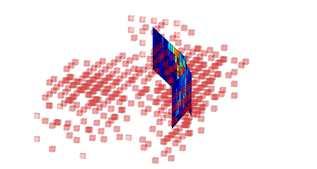|
|
| Line 48: |
Line 48: |
| | || | | || |
| | <youtube>KCDRZj8mVR0</youtube> | | <youtube>KCDRZj8mVR0</youtube> |
| − | <b>HH1 | + | <b>Geophysics and Earthquake Prediction |
| − | </b><br>BB1 | + | </b><br>Hank and Dr. Rebecca Bendick talk about her work in the science of earthquake forecasting, and then Jessi joins the show to show off Sandy the sand boa! |
| | |} | | |} |
| | |<!-- M --> | | |<!-- M --> |
Revision as of 12:28, 11 September 2020
Youtube search...
...Google search
..Google News ... mapped
Earthquake

|
AI Can Save You From An Earthquake
Physicist and author Louis A. Del Monte discusses a recently published finding that indicates artificial intelligence can save you from an earthquake. The new finding, recently published in Science Advances, indicates that AI is capable of detecting 17 times more earthquakes than older methods in a fraction of the time. There’s even some hope that it could predict earthquakes before they occur. This could be done by looking for patterns in the data; for example, finding times when a number of small earthquakes have happened in quick succession, triggering a bigger, potentially damaging quake. In addition to describing the new finding, Lou explains the Richter magnitude scale (often shortened to Richter scale), which is the most common standard of measurement for earthquakes. It was invented in 1935 by Charles F. Richter of the California Institute of Technology as a mathematical device to compare the size of earthquakes. The Richter scale is used to rate the magnitude of an earthquake, that is the amount of energy released during an earthquake.
|
|
Earthquake Prediction
|
Geophysics and Earthquake Prediction
Hank and Dr. Rebecca Bendick talk about her work in the science of earthquake forecasting, and then Jessi joins the show to show off Sandy the sand boa!
|
|
|
|
|
Richter's predictor Modelling Earthquake Damage
In this research the basic motto is “Prediction of earthquake damage using Machine Learning” and the idea is to use existing data set of seismic activity for training and then to predict, when an earthquake will happen and how much damage will be use through it. In this study, we are using Random forest classifier for the implementation.
|
|
Kaggle: Earthquake Prediction Challenge
Forecasting earthquakes is one of the most important problems in Earth science because of their devastating consequences. Current scientific studies related to earthquake forecasting focus on three key points: when the event will occur, where it will occur, and how large it will be. In this competition, you will address when the earthquake will take place. Specifically, you’ll predict the time remaining before laboratory earthquakes occur from real-time seismic data. If this challenge is solved and the physics are ultimately shown to scale from the laboratory to the field, researchers will have the potential to improve earthquake hazard assessments that could save lives and billions of dollars in infrastructure. This challenge is hosted by Los Alamos National Laboratory which enhances national security by ensuring the safety of the U.S. nuclear stockpile, developing technologies to reduce threats from weapons of mass destruction, and solving problems related to energy, environment, infrastructure, health, and global security concerns.
|
MSDS696 Kaggle LANL Earthquake Prediction
Masters Degree final project report for Data Science at Regis University in Denver, CO
(http://www.regis.edu/). Please see the GitHub repository at: http://github.com/Vettejeep/MSDS696-... or look for my postings on the Kaggle LANL Earthquake Prediction Challenge under the user name Vettejeep.
|
|
|
|
What is LNAL earthquake Predictions
What is LANL Earthquake Predictions..
|
|
|
HnI2nzCPaWo
Kaggle NYC meetup 2019 02 26 Neural Networks and earthquake detection | Jacob Peters
|
|
|
|
LANL-Earthquake-Prediction XGBoost Model Visualize
Too large to plot at one shot
|
|
Siraj Raval's
Data Science coding challenge time! The popular Data Science competition website Kaggle has an ongoing competition to solve the problem of earthquake prediction. Given a dataset of seismographic activity from a laboratory simulation, participants are asked to create a predictive model for earthquakes. In this video, I'll attempt the challenge as a way to teach 3 concepts; the Data Science mindset, Categorical Boosting, and Support Vector Regression (SVR) models. I'll be coding this using Python from start to finish in the online Google Colaboratory environment. The credits are from a mix of different Kaggle Kernels that I liked (lots), as well as my own code + explanations.This is the code for the Kaggle Earthquake Challenge videp | Siraj Raval on YouTube...
|
Kaggle Earthquake Prediction Challenge
Data Science coding challenge time! The popular Data Science competition website Kaggle has an ongoing competition to solve the problem of earthquake prediction. Given a dataset of seismographic activity from a laboratory simulation, participants are asked to create a predictive model for earthquakes. In this video, I'll attempt the challenge as a way to teach 3 concepts; the Data Science mindset, Categorical Boosting, and Support Vector Regression models. I'll be coding this using python from start to finish in the online Google colab environment. Enjoy!
|
|
